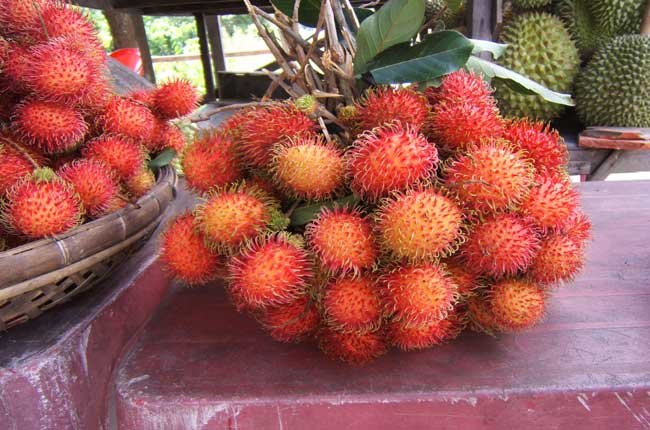VietNamNet Bridge – Rambutan, after dragon fruit, has been accepted to enter
the US market. However, there are still a lot of things that need to be done in
order to make rambutan salable in the US.
Too few Global GAP rambutans

With the yield of 20-25 tons per hectare for java rambutan and 18-20 tons per
hectare for longan rambutan, Vietnam will have 500-650 tons of rambutan,
including 100 tons of longan rambutan. Eighty percent of rambutan are harvested
during the rambutan season, which is the time when the prices stay at the lowest
levels during a year.
In July and August, Chanh Thu Enterprise in Ben Tre province, prepared 25-30
tons of rambutan for Rong Do Company to export to the US. However, the plan has
failed because the rambutans were believed to be uncompetitive in the US market,
where the prices were very low.
The representative of Rong Do said that the company now expects to export
out-of-season rambutan, believing that Vietnam only has the advantages in these
products. Some companies have got the orders to export fresh rambutan to Europe
and China, while two others in HCM City and Binh Duong province are planning to
bring out-of-season rambutan to the US.
In fact, the demand for out-of-season rambutan is also very high from the
domestic market, especially when 3-star and more luxurious hotels only accept
the fruits which have GAP certificates.
However, the problem is that there are only 100-150 tons of out-of-season
rambutan, harvested in September and October. Therefore, to date, the question
of how to create GAP rambutan with reasonable prices for the US market still has
not found the answer.
Too many rivals
Thailand has been well known as the oldest and biggest supplier of rambutan to
the US market. Thai rambutans are mostly ronreng rambutants, which Vietnam does
not have to export to the US. Thai products have been packed in paper boxes (3-5
kilos per box) which allows to preserve fruits in the best way, and they have
been well known among the US consumers.
Mexican exporters are selling java, ronreng rambutans to the US. Since the
growing areas are near the consumption hubs, which allows to save the transport
and preservation fees, the products prove to be very competitive in the US
market.
Besides, Malaysian and Indonesian have also joined the US market with java and
ronreng rambutans.
Meanwhile, Vietnam plans to export java rambutan and make longan rambutans on
the trial basis. Longan rambutant has high quality, but a problem has existed
that the number of longan rambutant which have the same big size as java
rambutant is modest, just 15-20 percent.
Longan rambutans are relatively expensive in the domestic market, which makes it
unfeasible to collect fruits on the domestic market for export at competitive
prices.
Out-of-season fruits could be the answer
Experts believe that Vietnam will not be able to compete with normal rambutants
during the seasons in the US market. The only solution for Vietnamese exporters
is to sell out-of-season rambutants, if the market has demands and accepts high
prices.
A Vietnamese export company believes that the retail of out-of-season java
rambutan could be high up to 15 dollars per kilo, or 300,000 dong per kilo.
Meanwhile, the prices of normal rambutants from Mexico (transported by land) are
just 3.5 dollars per kilo, and the exports from Guatemala, shipped by air, are
priced at just 5.5-6 dollars per kilo.
Director of Chanh Thu Company, Nguyen Thi Hong Thu, has affirmed that Cho Lach’s
rambutan is better than Thai or Indonesian products, and that only Vietnam has
out-of-season rambutant, while others don’t have.
Source: TBKTSG
- © Copyright of Vietnamnet Global.
- Tel: 024 3772 7988 Fax: (024) 37722734
- Email: evnn@vietnamnet.vn